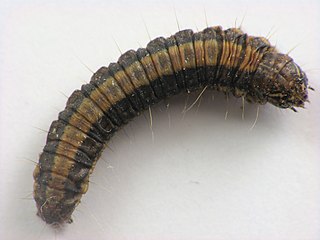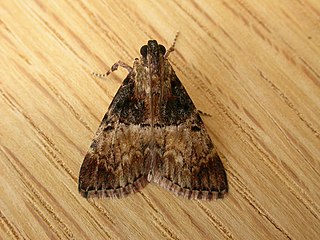Related Research Articles

Achatinidae is a family of medium to large sized tropical land snails, terrestrial pulmonate gastropod mollusks from Africa.

Achatina fulica is a species of large land snail that belongs in the family Achatinidae. It is also known as the Giant African land snail. It shares the common name "giant African snail" with other species of snails such as Achatina achatina and Archachatina marginata.
Giant African land snail is the common name of several species within the family Achatinidae, a family of unusually large African terrestrial snails:

Edgar Albert Smith was a British zoologist, a malacologist.

Achatina is a genus of medium-sized to very large, air-breathing, tropical land snails, terrestrial pulmonate gastropod mollusks in the family Achatinidae.

Achatina achatina, commonly known as the Giant Ghana African snail, also known as the Giant African snail, giant tiger land snail, and gigantocochlea, is a species of large, air-breathing land snail, a terrestrial pulmonate gastropod mollusk in the family Achatinidae. The name "Achatina" is from "achates", Greek for agate. It shares the common name "giant African snail" with other species of snails such as Achatina fulica and Archachatina marginata.
Prionapteryx is a genus of moths of the family Crambidae.

Cosmia is a genus of moths of the family Noctuidae.

Pitrazepin is a competitive GABAA and glycine receptor antagonist. It has been used to study insect and snail nervous systems in scientific research.

The Epipaschiinae are a subfamily of snout moths. Almost 600 species are known today, which are found mainly in the tropics and subtropics. Some occur in temperate regions, but the subfamily is apparently completely absent from Europe, at least as native species. A few Epipaschiinae are crop pests that may occasionally become economically significant.

Orthaga is a genus of snout moths. It was described by Francis Walker in 1859.
Orthaga amphimelas is a species of snout moth in the genus Orthaga. It is known from Australia.
Orthaga icarusalis is a species of snout moth in the genus Orthaga. It was described by Francis Walker in 1859. It is found on Borneo.

Orthaga phaeopteralis is a species of snout moth in the genus Orthaga. It was described by Oswald Bertram Lower in 1902. It is found in Australia and Papua New Guinea.
Orthaga vitialis is a species of snout moth in the genus Orthaga. It was described by Francis Walker in 1859. It is found in Sri Lanka.
Orthaga confusa is a species of snout moth in the genus Orthaga. It is found in Taiwan.
Orthaga durranti is a species of snout moth in the genus Orthaga. It is found on the Philippines.
Orthaga fumida is a species of snout moth in the genus Orthaga. It is found on Sumatra.
Orthaga leucatma is a species of snout moth in the genus Orthaga. It is found in Sri Lanka.

Cerconota is a genus of moths in the family Depressariidae. In 1991, I. W. B. Nye and David Stephen Fletcher included it in the family Oecophoridae and the subfamily Stenomatinae. It was later placed in the family Elachistidae and subfamily Stenomatinae by Ronald W. Hodges, in Niels Peder Kristensen (1999). Other classifications placed them in the Elachistidae or Oecophoridae, but they actually seem to belong to the Depressariidae.
References
- ↑ "GlobIZ search". Global Information System on Pyraloidea. Retrieved 2011-09-29.
- ↑ Studies on Ecological Characteristics of Orthaga achatina Butler